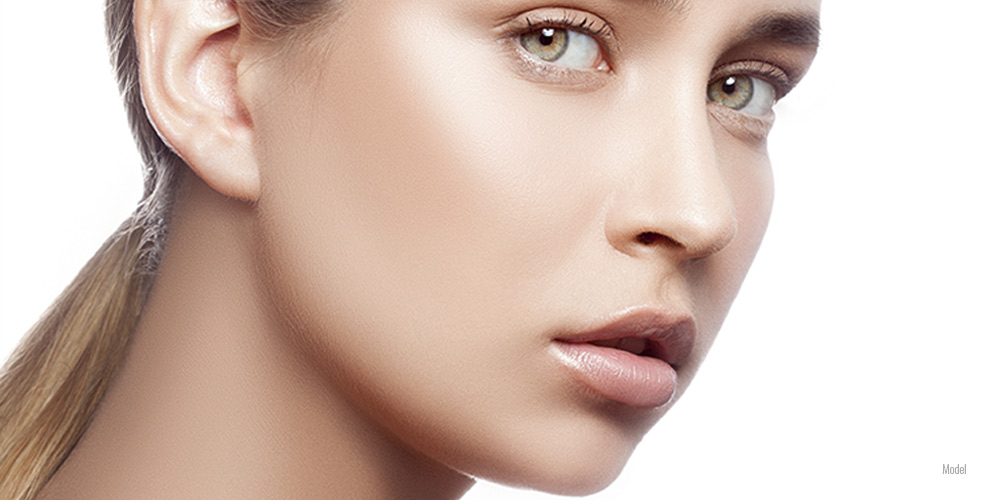
Rhinoplasty, otherwise known as a nose job, is among the most popular plastic surgery procedures. It enhances both the appearance and function of the nose, helping patients achieve their aesthetic goals or fix breathing issues. Since cartilage is the main structure and support of the nose, patients may wonder if cartilage can move after rhinoplasty. The short answer is yes (in certain cases). In this blog, we’ll talk about how cartilage behaves during nose job recovery, what can cause shifting, and how to ensure the best healing and results.
4 Min Read:
The Role of Cartilage in Rhinoplasty
Cartilage is the inner framework of the nose, providing structure and flexibility. In cosmetic nose surgery, different types of cartilage are manipulated to achieve the desired shape and function.
These are:
- Septal Cartilage: This cartilage in the center of the nose is often grafted for structural support.
- Upper Lateral Cartilage: Assists airflow and contributes to the bridge of the nose.
- Lower Lateral Cartilage: Shapes the tip of the nose and plays a big role in its aesthetics.
During rhinoplasty, Dr. Jason B. Diamond can reshape, remove, or reinforce cartilage using grafts to enhance structural stability. Cartilage is malleable during surgery but will heal and settle into place over time.
Cartilage Movement After Rhinoplasty
Cartilage can move after a nose job, but this is rare when proper surgical and recovery protocols are followed.
Surgical Technique
Your surgeon’s skill plays a big role in keeping cartilage stable. Dr. Diamond uses techniques like sutures, cartilage grafts, and structural reinforcement to prevent post-operative shifting. If the cartilage is not secure, there’s a higher risk of movement.
The Nose Job Healing Process
After rhinoplasty, the nose will start to stabilize by creating scar tissue around the altered cartilage.
This stabilization takes several months and locks the cartilage in place. During this time, trauma or pressure to the nose can cause cartilage to shift before it settles.
Patient Care and Post-Op Behavior
How well you follow Dr. Diamond’s post-surgical instructions can affect cartilage stability. Actions like the following can all put pressure on the healing cartilage and cause subtle shifts.
- Sleeping on your side
- Wearing glasses too soon
- Blowing your nose forcefully
- Trauma to the nose
Swelling and Scar Tissue Formation
Swelling is an expected part of the nose job recovery process and can temporarily distort the shape of the nose. As the swelling subsides, some patients may think their cartilage has moved when, in reality, it’s just part of the healing process.
How to Prevent Cartilage From Shifting After a Nose Job
To minimize cartilage shift after a nose job:
- Follow Your Surgeon’s Instructions: Dr. Diamond will give you detailed post-op instructions on how to care for your nose. Follow these instructions as closely as possible to keep the cartilage stable.
- Don’t Put Pressure on the Nose: Don’t touch, bump, or press on your nose. Be careful when dressing, washing your face, or doing any physical activity, and avoid contact sports or activities for six to eight weeks.
- Sleep in the Correct Position: Sleeping on your back with your head elevated for the first few weeks will help with swelling. Don’t sleep on your side or stomach, as this will put pressure on the nose.
- Don’t Wear Heavy Glasses or Sunglasses: Wearing glasses that rest on the nasal bridge can put pressure on healing cartilage, so use lightweight frames or opt for contact lenses for at least four to six weeks.
- Don’t Blow Your Nose: Don’t blow your nose for the first few weeks after rhinoplasty. If you must blow your nose, use a saline spray and dab the nose lightly. When Dr. Diamond clears you to gently blow your nose, take care not to rub or apply any unnecessary pressure.
What If Cartilage Moves After a Nose Job?
While rare, some patients may notice cartilage movement during healing. If the cartilage has moved, you may see:
- Visible asymmetry or irregularities that weren’t there immediately after surgery.
- A bump or depression that wasn’t part of the original outcome.
- Changes in breathing if structural support has been compromised.
- A feeling of movement or instability in the nose when you touch it.
If you experience any of these, get in touch with Dr. Diamond for an assessment as soon as possible.
Can Cartilage Be Fixed If It Moves?
Some minor shifting can resolve on its own as scar tissue stabilizes the nasal structure. However, if cartilage movement affects the appearance or function of the nose, Dr. Diamond may recommend a minor surgical touch-up or temporary dermal fillers to address small irregularities.
Revision rhinoplasty may be needed to reposition cartilage if the movement is more pronounced. Luckily, Dr. Diamond is an expert facial plastic surgeon whose skill ensures that cartilage stays in place during the course of his rhinoplasty procedures.
Your Beverly Hills Rhinoplasty Specialist
Dr. Jason B. Diamond is a leading Beverly Hills facial plastic surgeon who provides personalized rhinoplasty procedures to help his patients reach their aesthetic nose goals. To learn more or to schedule your Beverly Hills rhinoplasty consultation, call (310) 859-9816 or fill out our online contact form.
The team at Diamond Face Institute looks forward to helping you achieve a nose that fits your facial anatomy, balances your other facial features, and delivers your desired results.
You can see our surgeons’ rhinoplasty before and after results here.

